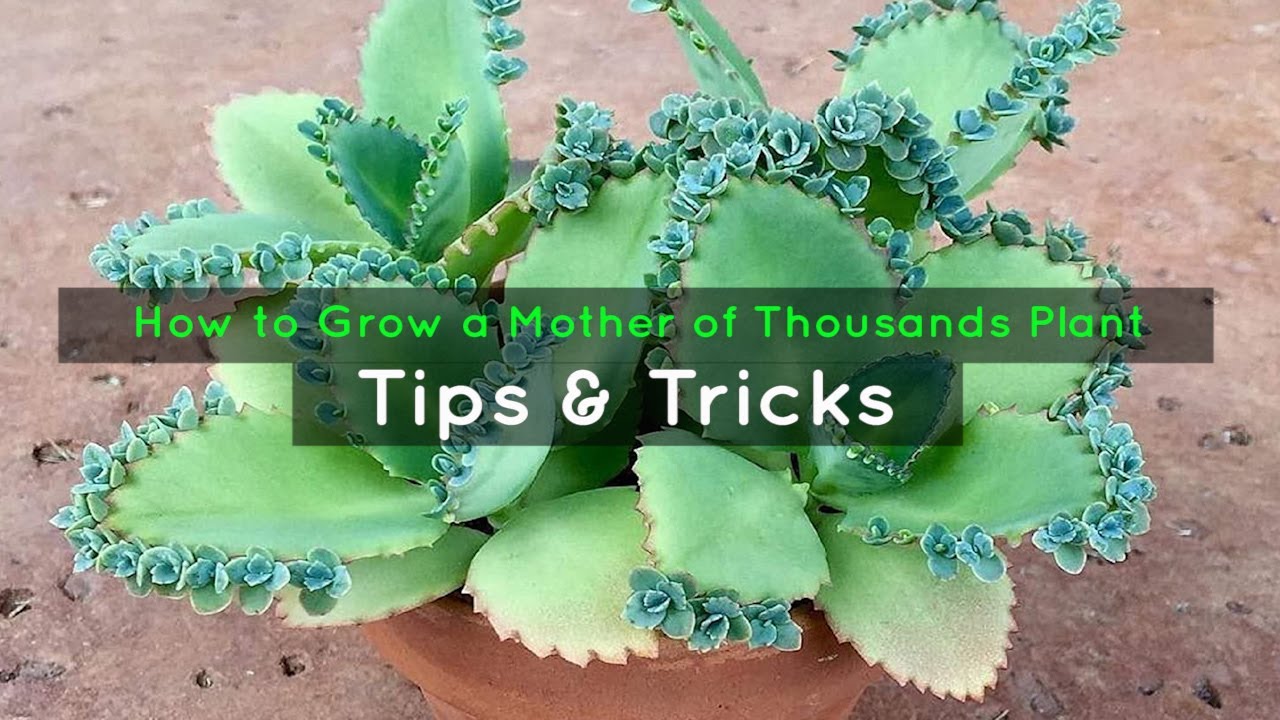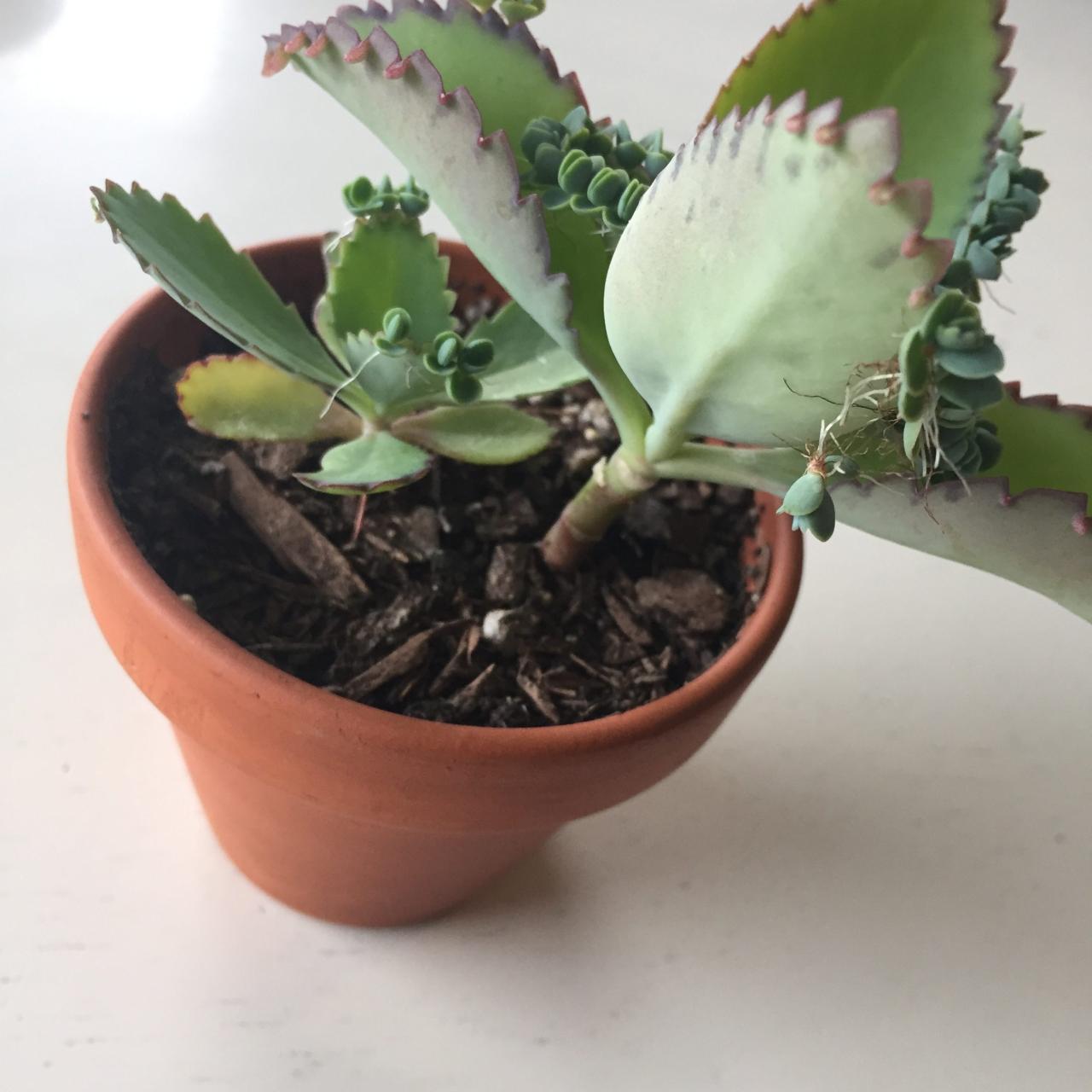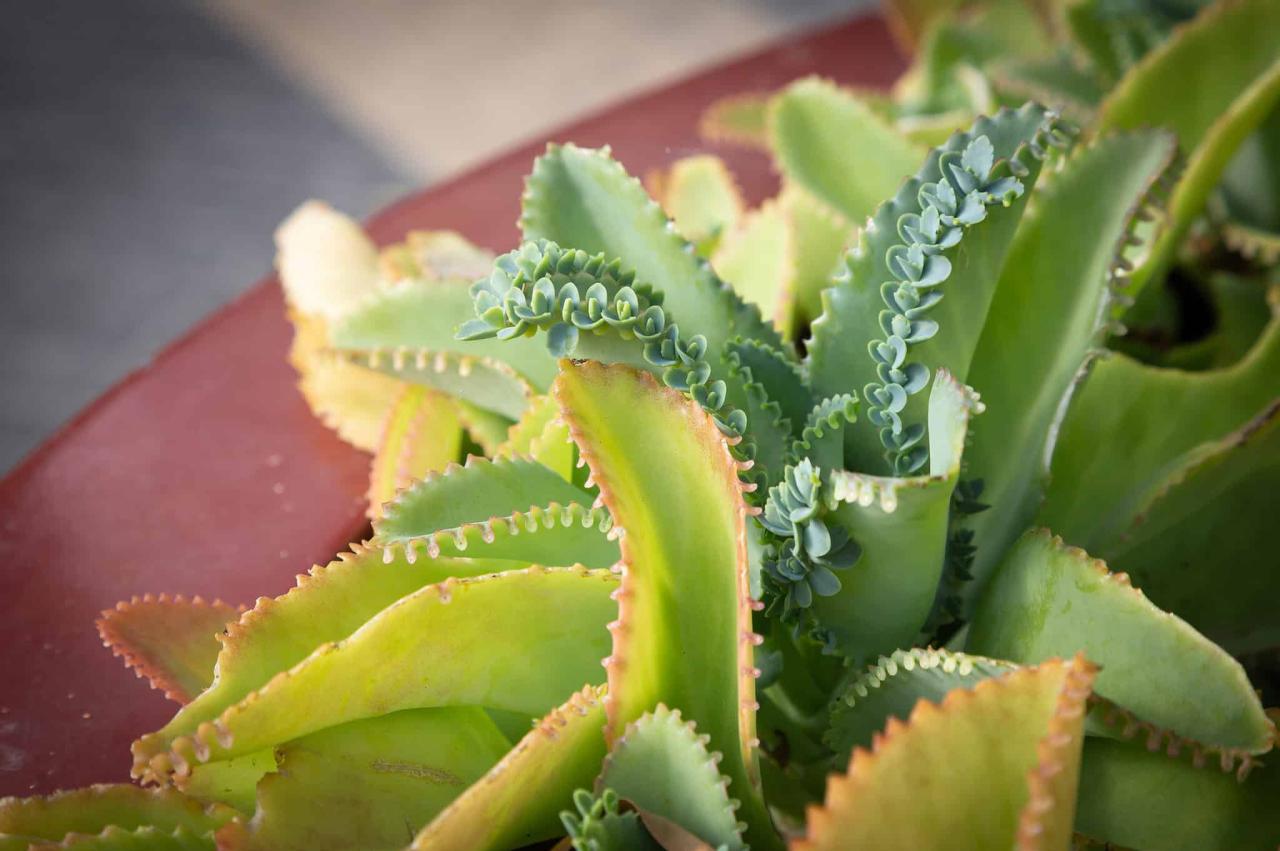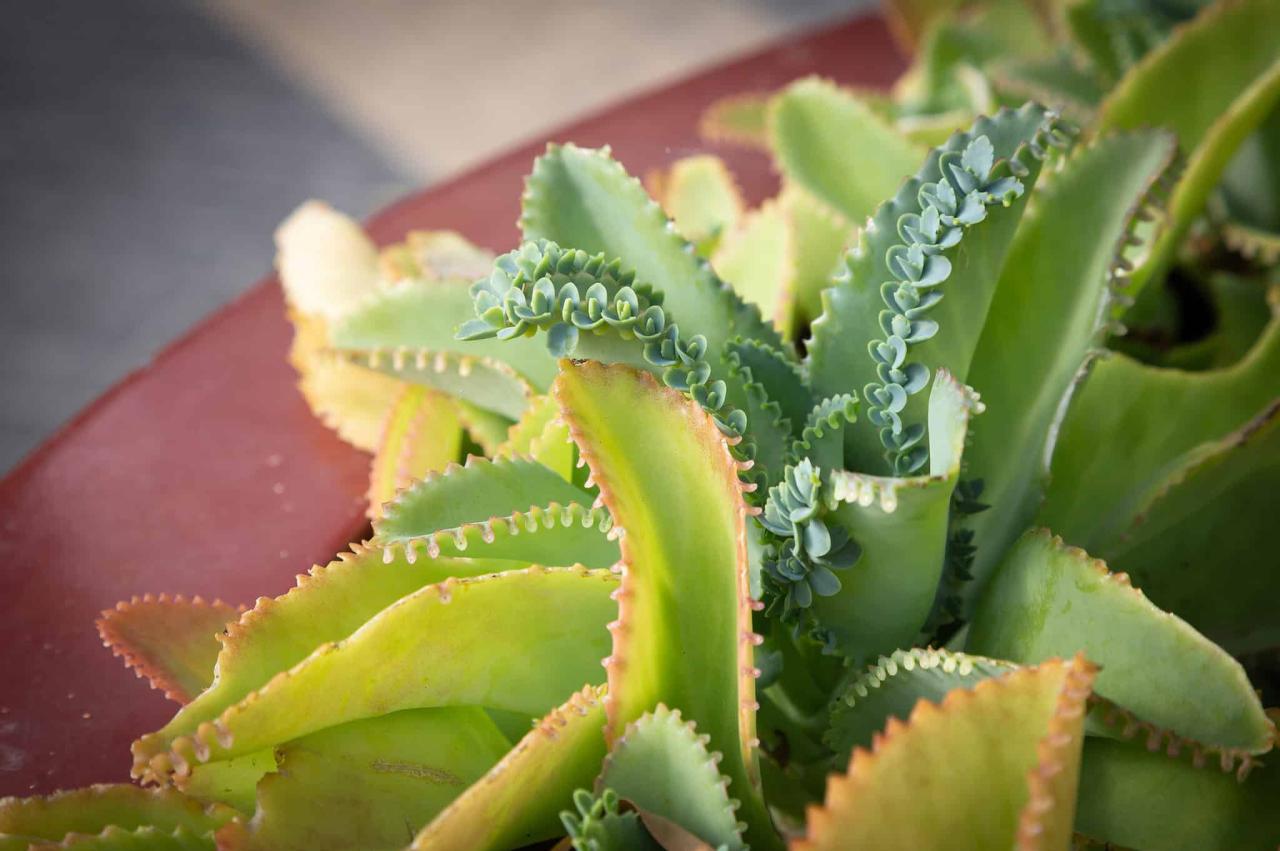How to Multiply Your Mother of Thousands Collection in No Time – the name itself hints at the plant’s prolific nature. Mother of Thousands, scientifically known as -Kalanchoe daigremontiana*, is a succulent that thrives on its ability to produce hundreds of tiny plantlets along the edges of its leaves.
These plantlets, when given the right conditions, quickly develop roots and become independent plants, making it incredibly easy to multiply your collection and share the beauty of this unique succulent with others.
This guide will delve into the intricacies of caring for Mother of Thousands, exploring optimal growing conditions, propagation techniques, and essential care practices to ensure rapid growth and a thriving collection. We’ll also address common problems and provide creative display ideas to showcase your flourishing Mother of Thousands.
Understanding Mother of Thousands
The Mother of Thousands plant, scientifically known asKalanchoe daigremontiana*, is a fascinating succulent that lives up to its name with its remarkable propagation method. Its unique characteristics and ability to reproduce rapidly make it a popular choice among plant enthusiasts, but also a potential invasive species in some regions.
Propagation Methods
Mother of Thousands plants are renowned for their prolific propagation, primarily through a process called viviparous reproduction. This unique method involves the plant producing plantlets, or baby plants, directly on the edges of its leaves. These plantlets develop roots and can readily grow into independent plants when they detach from the parent plant.
- Plantlets:The most common and efficient method of propagation involves the plantlets that develop along the leaf margins. These plantlets are miniature versions of the parent plant, complete with roots, and can be easily separated and potted individually.
- Leaf Cuttings:Another effective method involves taking leaf cuttings. A healthy leaf is cut from the parent plant and allowed to dry for a few days before being placed on a well-draining potting mix. New plantlets will emerge from the leaf’s edges, eventually developing into independent plants.
- Seeds:While less common, Mother of Thousands can also be propagated from seeds. The seeds are tiny and require specific conditions for germination, making this method less practical than plantlet or leaf cuttings.
Growth Cycle
Mother of Thousands plants exhibit a distinct growth cycle characterized by periods of rapid growth and dormancy.
- Active Growth:During the active growth period, typically in spring and summer, the plant focuses on producing new leaves and plantlets. The plant’s growth is accelerated by warm temperatures and ample sunlight.
- Dormancy:In the fall and winter, the plant enters a dormant phase, characterized by slower growth and a reduced rate of plantlet production. This period allows the plant to conserve energy and prepare for the next growth cycle.
Essential Growing Conditions
Mother of Thousands thrive in warm, sunny conditions similar to their native habitat. Providing the right environment is crucial for their health and vigorous growth, leading to a flourishing collection.
Light Requirements
Mother of Thousands require bright, indirect light to flourish. Direct sunlight can scorch their leaves, especially during the hottest months. The ideal location is a sunny windowsill with filtered light or a spot under a grow lamp. They can tolerate some shade, but growth may be slower.
Temperature and Humidity
These succulents prefer warm temperatures, ideally between 65°F and 80°F (18°C and 27°C). They can tolerate slightly cooler temperatures, but prolonged exposure to cold can damage them. Mother of Thousands are adaptable to various humidity levels, but they thrive in slightly humid environments.
Soil and Drainage
Well-draining soil is crucial for Mother of Thousands to prevent root rot. A cactus potting mix or a blend of equal parts potting soil, perlite, and sand is ideal. The soil should allow water to drain quickly and not remain soggy.
Creating a Suitable Growing Environment
- Choose a bright location with filtered light.
- Avoid direct sunlight, especially during the hottest hours.
- Ensure adequate ventilation to prevent stagnant air.
- Use a well-draining potting mix.
- Water thoroughly when the soil is dry to the touch.
- Allow the soil to dry completely between waterings to prevent root rot.
- Fertilize during the growing season with a balanced liquid fertilizer diluted to half strength.
Propagation Techniques

Mother of thousands is a remarkably easy plant to propagate, allowing you to quickly expand your collection. Several methods are available, each with its own advantages and disadvantages.
Propagation Methods
Understanding the different methods of propagation for Mother of Thousands is essential for successful multiplication. The following table summarizes the key characteristics of each technique:
Method |
Description |
Advantages |
Disadvantages |
|---|---|---|---|
Leaf Propagation |
Cutting a leaf from the mother plant and allowing it to develop roots and plantlets. |
Simple and efficient; produces multiple plantlets from a single leaf. |
May take longer to develop new plants compared to other methods. |
Plantlet Propagation |
Separating plantlets that grow along the leaf margins and planting them individually. |
Fast and straightforward; plantlets are already established and ready to grow. |
Requires careful handling to avoid damaging the plantlets. |
Stem Cutting Propagation |
Cutting a stem from the mother plant and planting it in a suitable medium. |
Produces a larger plant more quickly than leaf propagation. |
Less common and may require more specialized care. |
Seed Propagation |
Collecting seeds from the plant and sowing them in a suitable medium. |
Produces a large number of new plants. |
Seeds can be slow to germinate and may not be true to the parent plant. |
Leaf Propagation
Leaf propagation is a popular and effective method for multiplying Mother of Thousands. This method involves cutting a healthy leaf from the mother plant and placing it in a suitable growing medium, such as a mixture of potting soil and perlite.
Propagating Mother of Thousands is a breeze, thanks to the plant’s prolific nature. Simply detach the tiny plantlets that sprout along the leaves and pot them in well-draining soil. To further enhance your plant collection, consider incorporating seasonal bounty from your own garden, just like those featured in Harvest Moon Orchard: Tips for an Amazing Seasonal Experience.
The abundance of Mother of Thousands, along with your own homegrown produce, will surely bring joy and vibrancy to your indoor and outdoor spaces.
The leaf will eventually develop roots and produce new plantlets along its edges.
Plantlet Propagation
Plantlet propagation is a straightforward and rapid method for increasing your Mother of Thousands collection. As the plant matures, tiny plantlets develop along the edges of its leaves. These plantlets are already rooted and can be gently separated from the parent leaf.
They can then be potted individually in a suitable growing medium, where they will quickly develop into mature plants.
Optimal Care for Rapid Growth

Providing the right care for your Mother of Thousands is essential for its rapid growth and propagation. By following a consistent routine, you can encourage your plant to thrive and produce numerous plantlets.
Watering Schedule
Regular watering is crucial for the healthy growth of your Mother of Thousands. The plant thrives in well-draining soil that is slightly moist but not waterlogged.
- Water thoroughly when the top inch of soil feels dry to the touch.
- Allow the excess water to drain away completely, preventing root rot.
- During the summer months, you may need to water more frequently, especially if your plant is exposed to direct sunlight.
- In winter, reduce watering as the plant enters a period of dormancy.
Fertilizing
Mother of Thousands is a light feeder, and over-fertilizing can harm the plant.
- Use a balanced liquid fertilizer diluted to half strength.
- Fertilize once a month during the growing season (spring and summer).
- Avoid fertilizing during the winter months when the plant is dormant.
Pruning and Deadheading
Pruning and deadheading are not essential for the growth of Mother of Thousands, but they can help to maintain its shape and encourage bushier growth.
The best part about Mother of Thousands is their ability to rapidly multiply, and this fall, you can enhance that process with a little inspiration from nature’s bounty. Take a trip to Why Harvest Moon Orchard Is the Ultimate Fall Adventure and immerse yourself in the vibrant colors and scents of autumn.
Then, return home and channel the energy of the harvest into nurturing your own Mother of Thousands collection, watching it flourish as the season progresses.
- Remove any dead or yellowing leaves to prevent the spread of disease.
- Pinch off any flower stalks that appear. This will encourage the plant to produce more plantlets.
Repotting
Repotting your Mother of Thousands is essential for its growth and health. As the plant grows, it will eventually outgrow its pot and require a larger container.
- Repot your plant every 1-2 years, depending on its growth rate.
- Choose a pot that is only slightly larger than the previous one.
- Use a well-draining potting mix.
- Carefully remove the plant from its old pot and gently loosen any roots that are circling around the base of the root ball.
- Place the plant in its new pot and fill in with potting mix, ensuring the crown of the plant is above the soil line.
- Water the plant thoroughly after repotting.
Avoiding Common Problems: How To Multiply Your Mother Of Thousands Collection In No Time

While Mother of Thousands plants are generally hardy and low-maintenance, they can be susceptible to certain pests and diseases. Understanding these potential issues and implementing preventative measures can help ensure your collection thrives.
Pests and Diseases
Pests and diseases can significantly impact the health and growth of your Mother of Thousands collection.
- Mealybugs:These small, white, cottony insects can infest plants, sucking sap and causing stunted growth. They often congregate in the leaf axils and under the leaves.
- Aphids:These tiny, pear-shaped insects can also feed on plant sap, leading to distorted growth and yellowing leaves.
- Spider Mites:These microscopic pests can cause webbing on the leaves and lead to discoloration and leaf drop.
- Root Rot:This fungal disease occurs when the soil is overly wet, leading to root decay and plant death.
- Leaf Spot:This fungal disease manifests as brown or black spots on the leaves, which can spread and cause defoliation.
Preventative Measures, How to Multiply Your Mother of Thousands Collection in No Time
Preventative measures can help minimize the risk of pest and disease infestations.
- Proper Watering:Ensure the soil is well-draining and avoid overwatering. This helps prevent root rot.
- Regular Inspection:Inspect your plants regularly for signs of pests or diseases. Early detection allows for timely intervention.
- Cleanliness:Keep the area around your plants clean and free of debris, as this can harbor pests.
- Quarantine New Plants:Isolate new plants for a period before introducing them to your collection to prevent the introduction of pests or diseases.
Treating Affected Plants
If you notice signs of pests or diseases, it’s crucial to act quickly to prevent further spread.
- Pests:For mild infestations, you can try using a strong jet of water to dislodge pests. For heavier infestations, consider using insecticidal soap or neem oil.
- Root Rot:If you suspect root rot, repot the plant in fresh, well-draining soil and ensure proper watering practices.
- Leaf Spot:Remove infected leaves and dispose of them properly. You can also use a fungicide to control the spread.
Creative Display and Arrangement
Arranging your Mother of Thousands collection is an exciting part of cultivating these unique plants. You can create stunning displays that highlight their vibrant foliage and unique growth patterns. This section explores various ways to arrange and showcase your Mother of Thousands collection, adding a touch of green to your home or garden.
Container Options for Mother of Thousands
Different containers can significantly impact the visual appeal of your Mother of Thousands collection. Choosing the right container can enhance the plant’s beauty and create a cohesive look.Here are some container options for displaying your Mother of Thousands:
- Hanging Baskets:Hanging baskets allow the plant’s cascading growth to hang freely, creating a dramatic and eye-catching display. Choose baskets with drainage holes to prevent waterlogging.
- Terracotta Pots:Terracotta pots provide a classic and rustic look, complementing the plant’s natural charm. They are also porous, allowing for good air circulation and drainage.
- Glass Terrariums:Terrariums offer a miniature ecosystem for Mother of Thousands, showcasing their growth in a controlled environment. Choose a terrarium with a lid to maintain humidity levels.
- Ceramic Planters:Ceramic planters come in a variety of shapes, sizes, and colors, offering a wide range of options to match your decor. Look for planters with drainage holes to ensure proper water drainage.
- Repurposed Containers:Get creative and use repurposed containers like old teacups, mason jars, or even vintage suitcases to create unique and personalized displays.
Displaying Mother of Thousands in a Garden Setting
Mother of Thousands can add a touch of whimsy and texture to your garden. Their cascading foliage and vibrant colors can create a captivating focal point in a garden bed or border. Consider these tips for showcasing Mother of Thousands in your garden:
- Ground Cover:Plant Mother of Thousands in a large container and place it in a shady area of your garden, allowing the plant’s cascading foliage to spill over the edges, creating a lush and textured ground cover.
- Hanging Baskets:Hang Mother of Thousands baskets from trees or fences to add a vertical element to your garden and create a sense of movement and intrigue.
- Rock Gardens:Mother of Thousands can thrive in a rock garden, adding a touch of green and texture to the landscape. Choose a spot with well-drained soil and plenty of sunlight.
- Container Gardens:Plant Mother of Thousands in containers alongside other succulents or flowering plants to create a visually appealing and low-maintenance container garden.
End of Discussion
With the right knowledge and a little patience, you can transform a single Mother of Thousands into a thriving collection. Whether you’re a seasoned plant enthusiast or a beginner gardener, this guide provides a comprehensive roadmap for maximizing your plant’s potential and enjoying the rewarding experience of watching your Mother of Thousands collection flourish.
Remember, the journey of nurturing these plants is as satisfying as the final outcome, and with the right care, you’ll soon have a collection of Mother of Thousands that will be the envy of any plant lover.
User Queries
What is the best time of year to propagate Mother of Thousands?
Mother of Thousands can be propagated year-round, but spring and summer are ideal as they offer warmer temperatures and longer daylight hours, promoting faster root development.
Are Mother of Thousands poisonous to pets?
Yes, Mother of Thousands is toxic to pets. Keep it out of reach of cats, dogs, and other animals as ingestion can cause digestive upset and other health issues.
Can I grow Mother of Thousands outdoors?
While Mother of Thousands can tolerate outdoor conditions, it’s best suited for indoor cultivation, especially in regions with cold winters. Ensure it receives adequate sunlight and protection from frost.
